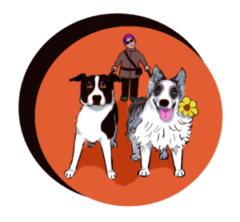
A discussion this week in the Teaching Dog Trainers How To Teach People Facebook Group on the topic of homework yielded some excellent advice. Hopefully this summary is in a format that doesn’t miss or alter individual contributions too much.
The Question
Do you assign homework? Any suggestions for strategies that motivate people to do the work? How do you check in with students about their progress from one session to the next?
Guiding Principles
- Students need a reason for completing homework.
- It is important to explain and demonstrate the benefits of home practice.
- Convenient access to instructional materials increases likelihood that students will use them
- Always welcome all types of learners.
- Motivation is more effective than pressure.
- Don’t underestimate the power of peers for motivating others.
- People who feel accomplished are more likely to succeed (careful of using examples and demonstrations that might make them feel inadequate).
- Focusing on process rather than the final product break down tasks into more manageable chunks.
- Scheduling regular class/training time with dogs is beneficial; finding time to do homework is a bonus.
Tips and Strategies
- Set up an online venue to communicate between sessions, such as a private Facebook Group.
- Use extrinsic motivators, such as pet store gift certificate for completion of weekly practice.
- Do frequent “check ins” to see how home practice went, and to see if there are any problems or questions.
- Consider not requiring homework; it might happen anyway.
- Teaching tricks can be a fun way to learn about different training methods, and students might be more motivated to practice.
- Provide handouts (paper or online)
- Weekly Overviews to help students prepare for upcoming class
- Weekly Summaries, outlining what was accomplished, and how to practice and advance skills
- Checklist of behaviours worked on during class, in a format that facilitates tracking practice and progress (times per week, etc)
- Instructional materials (e.g. “how to” sheets on shaping, loose leash walking, etc)
- Be explicit about what needs to be completed before moving on to the next step. Schedule the next session when the student is ready.Photo by jaqian https://flic.kr/p/xgbqo
